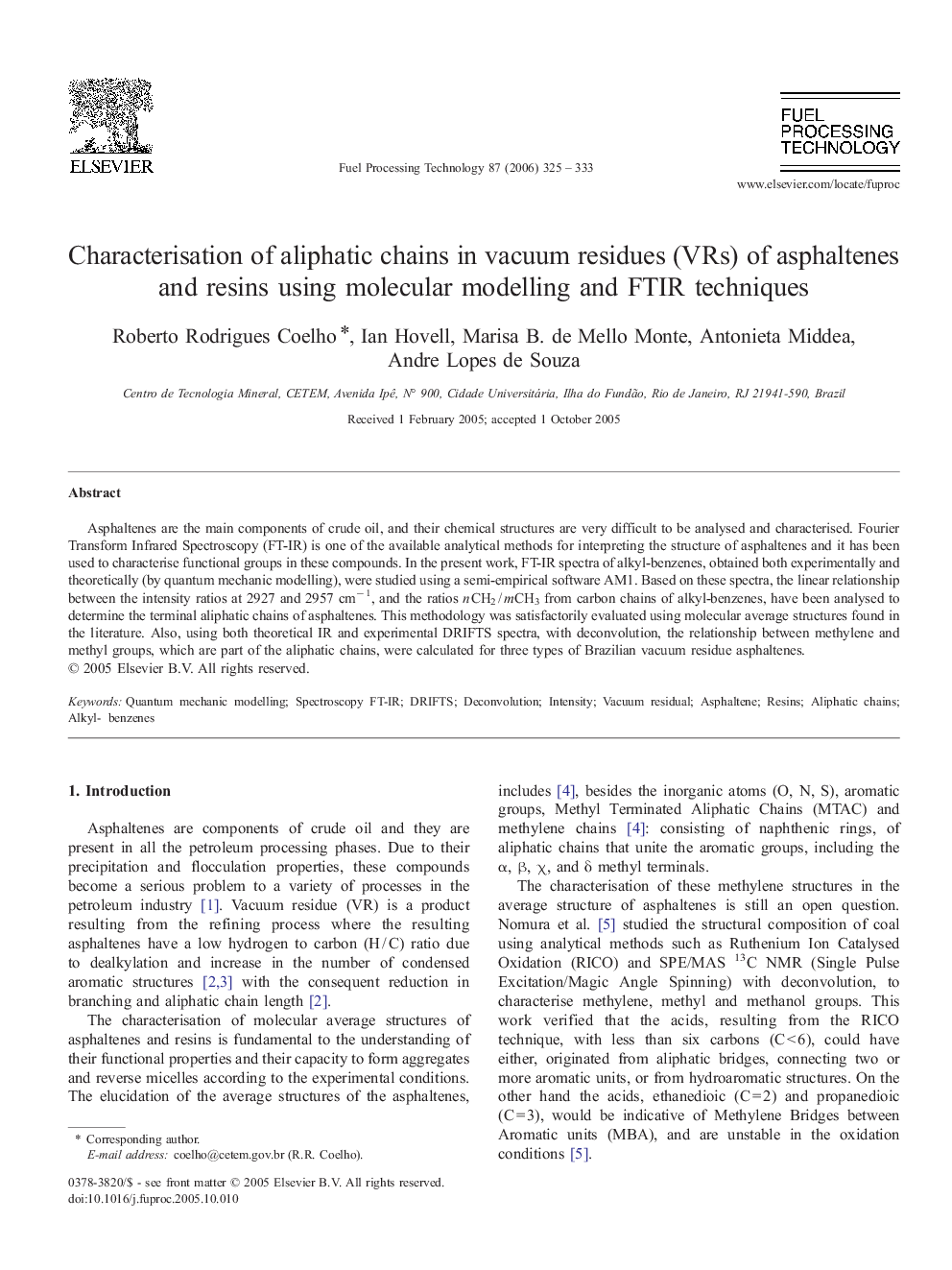| Article ID | Journal | Published Year | Pages | File Type |
|---|---|---|---|---|
| 211714 | Fuel Processing Technology | 2006 | 9 Pages |
Asphaltenes are the main components of crude oil, and their chemical structures are very difficult to be analysed and characterised. Fourier Transform Infrared Spectroscopy (FT-IR) is one of the available analytical methods for interpreting the structure of asphaltenes and it has been used to characterise functional groups in these compounds. In the present work, FT-IR spectra of alkyl-benzenes, obtained both experimentally and theoretically (by quantum mechanic modelling), were studied using a semi-empirical software AM1. Based on these spectra, the linear relationship between the intensity ratios at 2927 and 2957 cm− 1, and the ratios nCH2 / mCH3 from carbon chains of alkyl-benzenes, have been analysed to determine the terminal aliphatic chains of asphaltenes. This methodology was satisfactorily evaluated using molecular average structures found in the literature. Also, using both theoretical IR and experimental DRIFTS spectra, with deconvolution, the relationship between methylene and methyl groups, which are part of the aliphatic chains, were calculated for three types of Brazilian vacuum residue asphaltenes.
